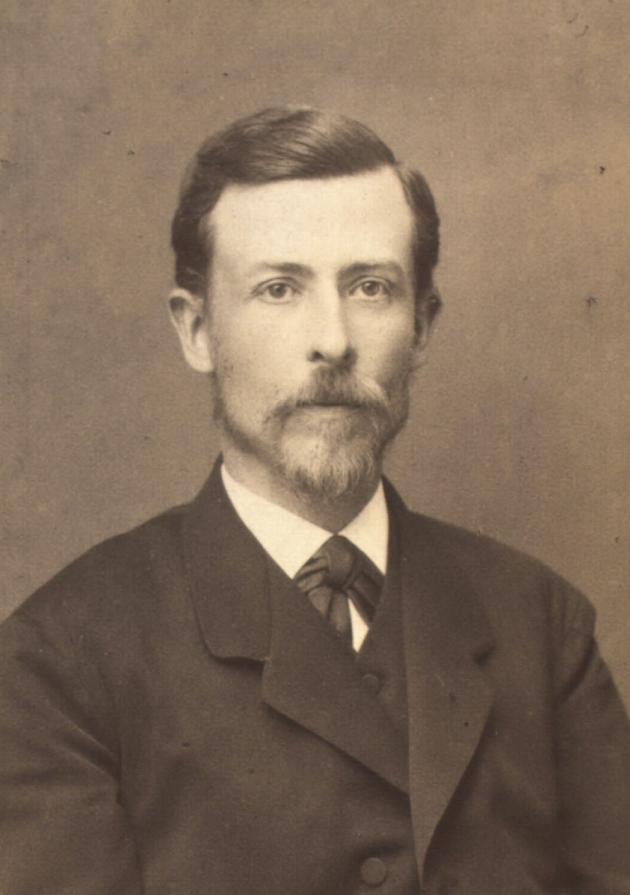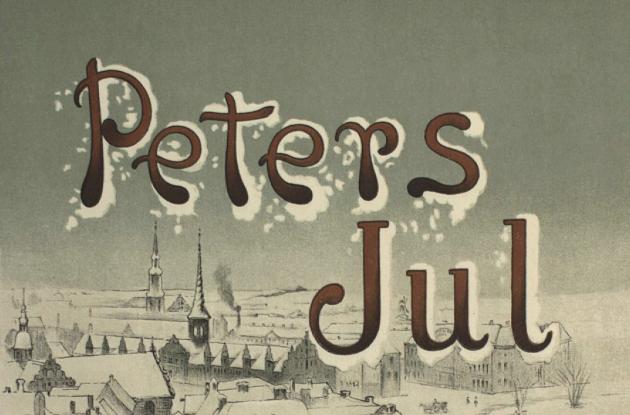Peter's Christmas
Read about the cosy Danish Christmas story Peter's Christmas and its muddled path to publication.
Peter's Christmas, which many may know from childhood, was first published in December 1866. The Christmas story of Peter, which extends from the early days of Christmas to Holy Trinity Day on January 6, is for many the epitome of a cosy Danish Christmas.

Photo: Carl Christian Sonne
Johan Krohn
Johan Jacob Krohn (1841-1925), son of sculptor and medalist F. K. Krohn, was during his life a school administrator, author and poet. He wrote a number of stories for children throughout his life, which were collected in several volumes entitled "Stories for Children". He is however probably best known for Peter's Christmas, which has been part of the Christmas tradition in many Danish homes for over 150 years.
Krohn begins writing Peter's Christmas in the years after his graduation in 1860 from the Metropolitan School in Copenhagen. His idea with the book is that the Christmas verses could maybe provide the little Danish schoolboys with something they could understand and have fun with and learn from
. Alas, he does not succeed in finding a publisher for the book until a few years later, and the publishing process also turns out to be tougher than expected.
First verse of "Before Christmas" from Peter's Christmas (in Danish)
“Jeg glæder mig i denne tid;
nu falder julesneen hvid,
så ved jeg julen kommer
Min Far hver dag i byen går
og når han kommer hjem, jeg står
og ser hans store lommer.
“
A disappointing publication
Peter's Christmas is a much-loved Christmas tale today, but did you know it was almost not published?
In the beginning of 1865, the book has been sent for publication, but Johan Krohn is not satisfied with the book's expression. He refuses to let it be published, because - as he writes to his friend on Christmas Eve - the book appears to him as a terrible thing
because it had come into the hands of a real pig (excuse the expression!) of a lithographer
.
The book is illustrated by the author's brother Pietro Krohn and their mutual friend Otto Haslund. Johan Krohn writes in the letter to his friend that "Yes, it may now sound ridiculous to anyone who sees the book, but I claim that their pictures were neat". But when the brothers and their friend visited the lithographer in 1865, they almost fainted, Krohn writes.
“The book was destroyed, distorted, ground, printed and bound and equipped as a 2 penny book! In short, its basement appearance made us protest and refuse to let the book see the light of day in that costume.
“
When Krohn shows his contempt for the book, it has already been printed but publication is out of the question. However, the following summer, when the publisher is about to go bankrupt, Krohn allows the publisher to release the book to avoid going belly up.
The book is published in December 1866 to moderate success, and in the following years, its popularity grows. Listen to contemporary reviews of the book in the video, where senior researcher Sonny Ankjær Sahl talks about the first edition (in Danish).
Multiple editions
In 1870, an expanded edition is released, one which Krohn is more pleased with. The edition contains only illustrations by Pietro Krohn, and it is in this edition that the text After Christmas is added.
First verse of "After Christmas" from Peter's Christmas, 1870 (in Danish)
“Og Julen endte - Børnene fik
igjen deres Bøger fat og gik
til Skolen glad og fornøjet
Dér tænkte de ikke paa Julen; men
naar Klokken to de kom hjem igjen,
de leged med Juletøjet.
“
It is only in 1889 that a colour printed edition is published, and in 1947 the book is published by Gyldendal with new illustrations by Herluf Jensenius.
